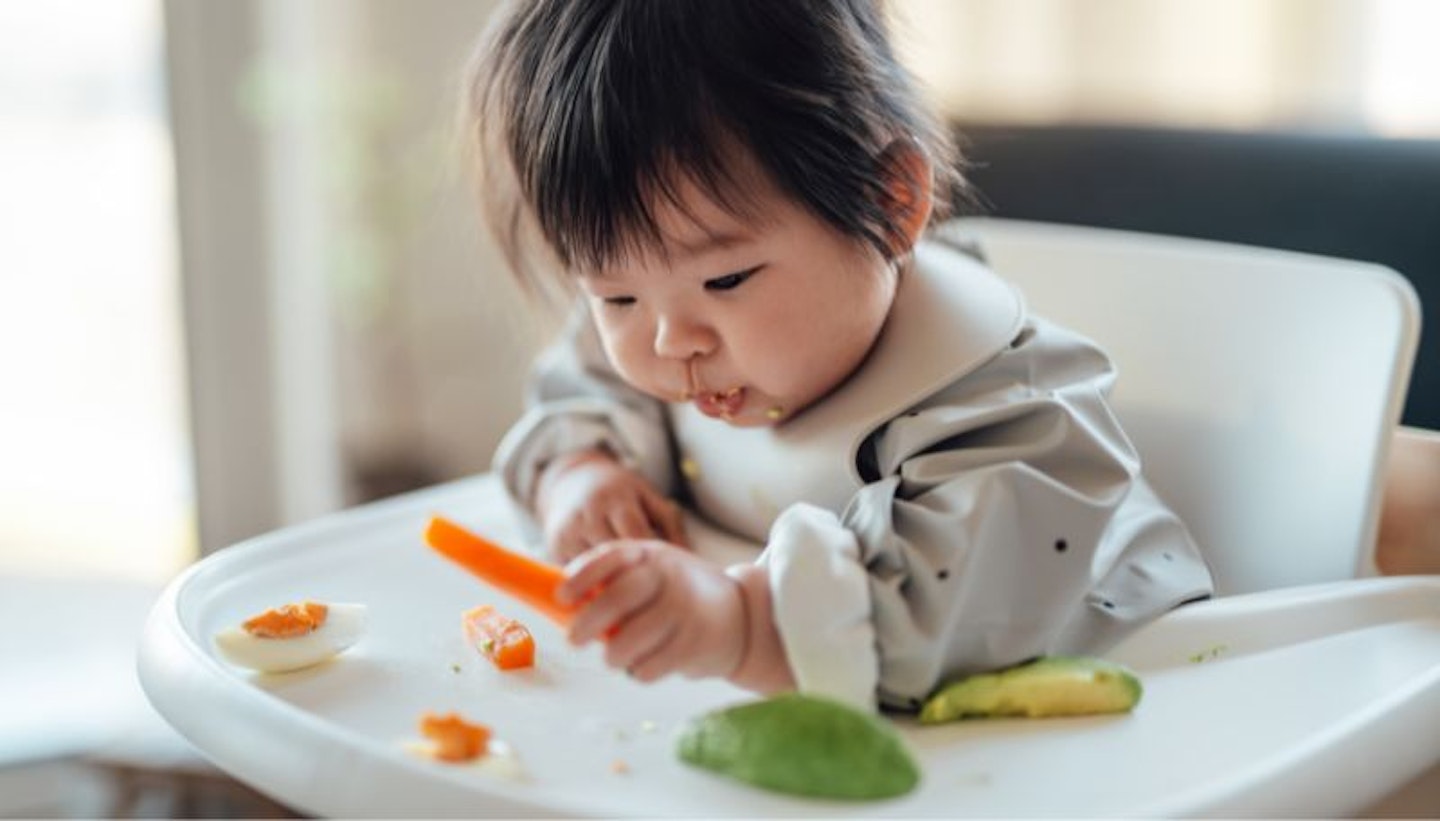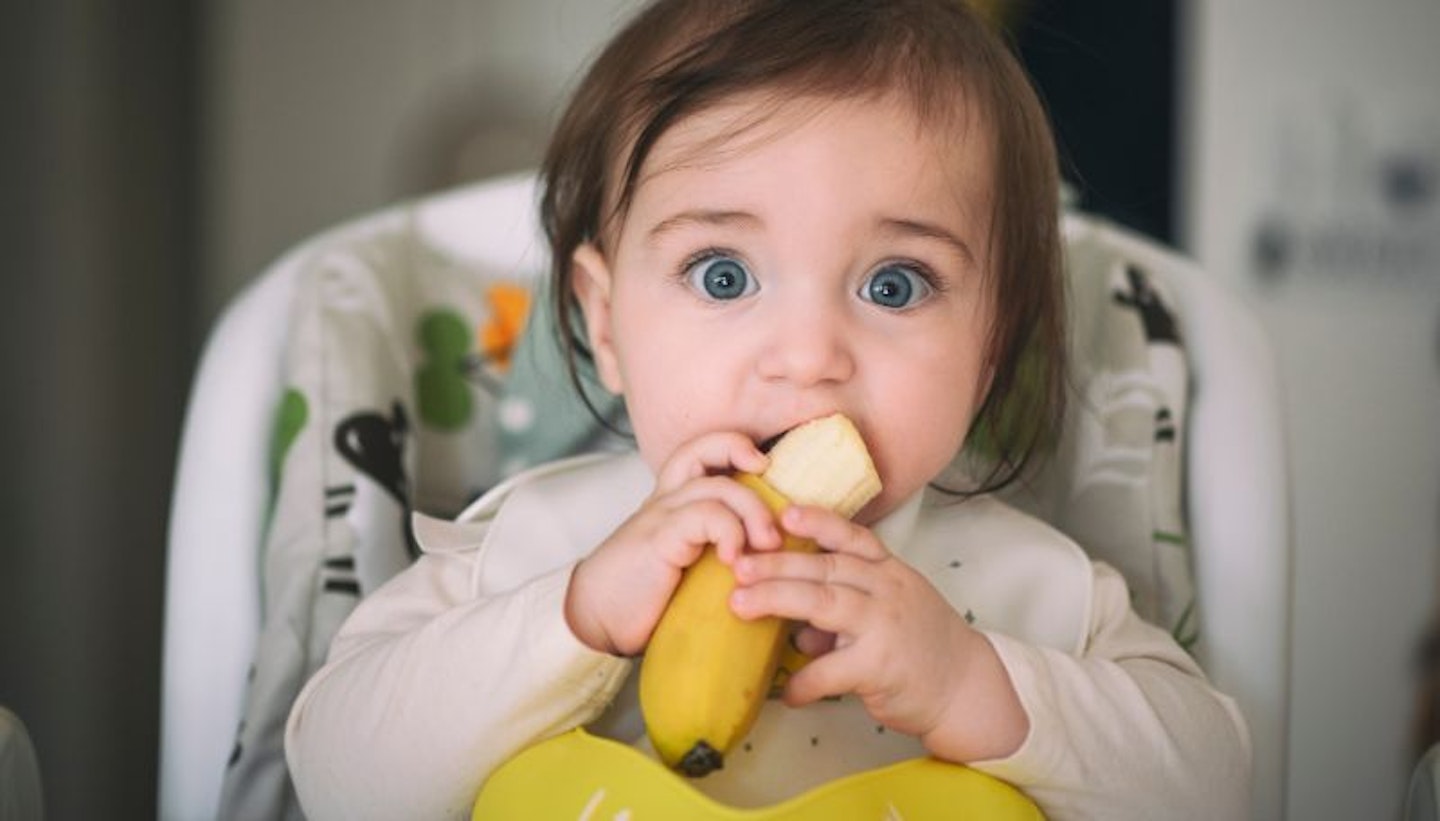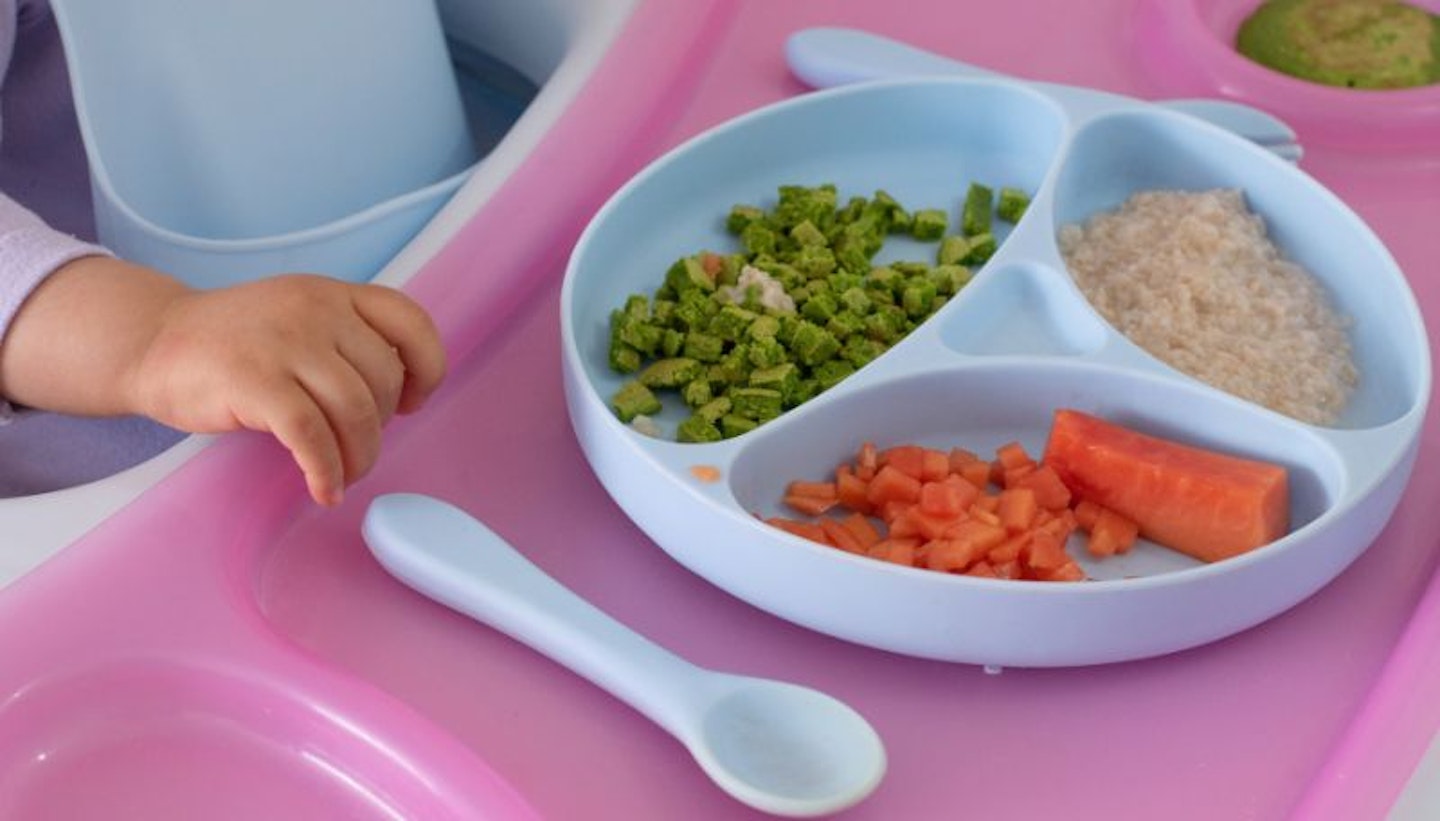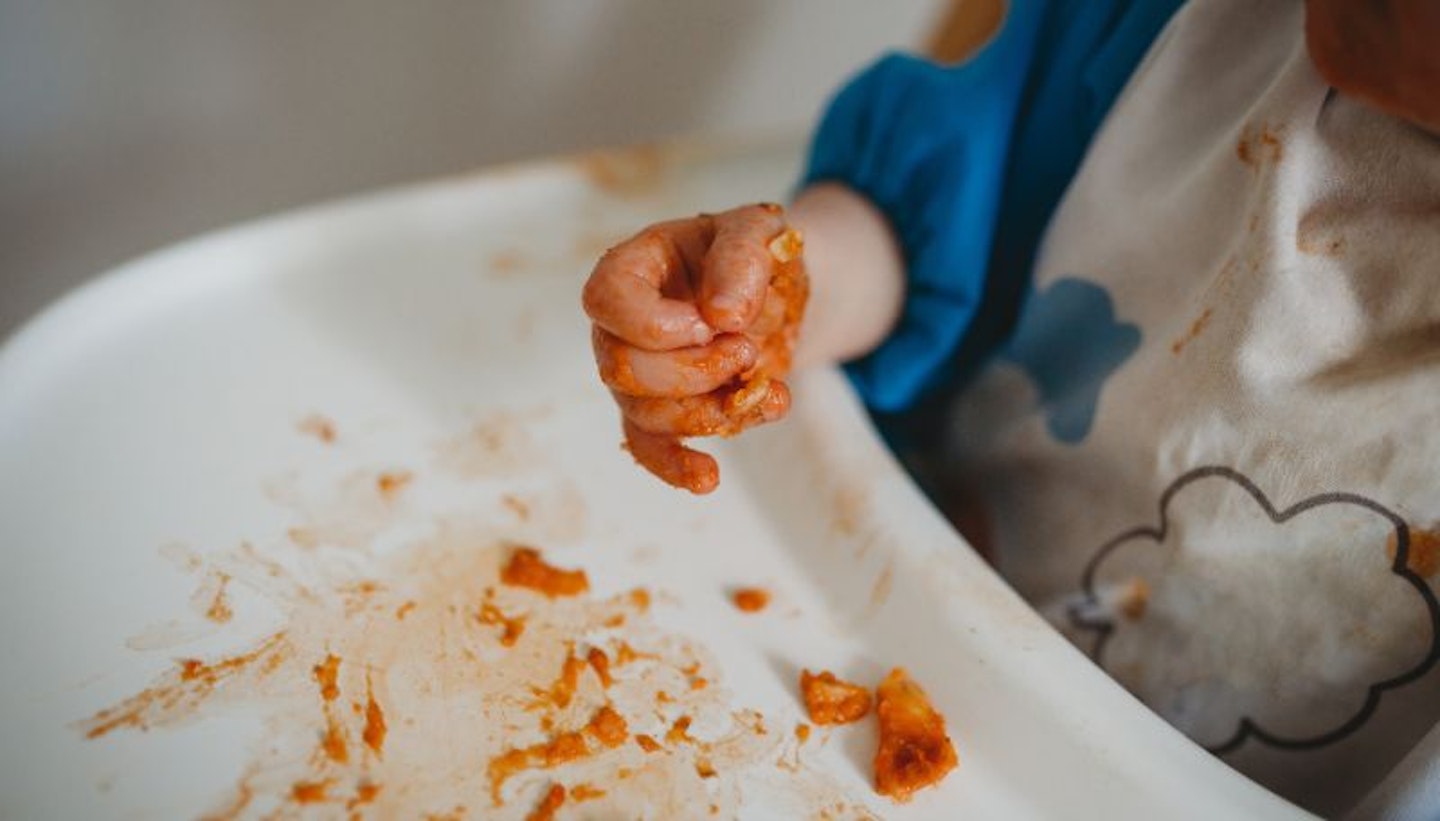When the time has come to start introducing solid food to your baby, offering options that they can pick up with their fingers is crucial to their learning and development. Initially, adding in a small amount of finger foods into your baby’s diet from around the 6 months mark will greatly help with food exploration. As babies and toddlers consume more and more textures and flavours, finger foods will feed into their nutrition, as well.
We spoke with Charlotte Stirling-Reed, the baby and child nutritionist, to get her expert advice on those baby led weaning first foods.
What 12 foods make good first foods?
I’m a huge fan of veg-led weaning, which simply means focusing on vegetables at the start of their weaning journey, and being sure to offer plenty of veggies (along with other foods) as your little one moves on to a more complex diet.
Babies are actually born with a preference for sweeter foods and so don’t generally need much help to like and accept sweeter options such as apples and pears. However, weaning is about exploring the new and some research suggests that starting baby’s weaning journey by offering a variety of veggies can be a helpful way to go to help them to accept a wider range of tastes (not just sweet) early on.

Some of my favourite first foods to offer at the very start of weaning include:
Broccoli
My favourite finger food as they are easily accessible, super soft and great for babies to hold and explore.
Potato
A really neutral food and a great one to add texture and a base to other veggies.
Cauliflower
As with broccoli – makes great finger food, but also adds a very new flavour to baby’s repertoire.
Avocado
A really nutrient dense food with a neutral flavour and a great one to get babies into early. Easy to mash too making it a fab portable baby food.
Courgette
A great finger food (might want to remove the skin initially. Cooks super quickly and is very accessible. Also adds bitter flavours to help baby experience something very new.
Spinach
A really bitter flavour that is very different for baby to try. Also a lovely one to puree and mix with other flavours to add nutrients and flavour.
Some other great first foods that aren’t just veggies:
Salmon
Salmon is nutrient rich, a good food to get in early to build acceptance and it’s super soft! Also it makes it a fab way to share meals with baby if you eat fish.
Peanut butter
Allergens are actually really good to get into baby’s diet early on. They need to be offered in TINY amounts on the first attempt so you can check for an allergy, but peanut butter (and other allergens) are great to add in the diet early.
Banana
Bananas also make a fab base for many other foods to be combined with it, they also make fab finger foods for babies too and good dipping tools. They are also readily accessible foods too.

Eggs
Offer as per allergen guidelines for the first few tastes, but these are such an easy and nutrient rich option as a first food. Make scrambled egg or mini omelettes cut into strips.
Lentils
Not as a finger food, but as an early ingredient added to mashes or blended into purees. They are nutrient dense and subtle.
Oats
Energy dense for growing babies and can be combined with so many things to make a delicious porridge!
Foods to avoid at the start of weaning include
Most foods are suitable to offer to babies when you start weaning, and it’s a good idea to offer as much variety as possible. There are, however, a few foods that are not recommended to be offered to babies under the age of 1 year, which are:
Sugar and sugary foods
Offering foods with added sugar can be detrimental for dental health in young kids, and it’s ideal to help them to develop a taste for lots of flavours, including savoury and bitter foods.
Salt and salty foods
Too much salt can be harmful to our kids’ health, as well as our own, so it’s best to avoid adding salt to foods where possible and limit foods high in salt where you can.
Honey
There is a risk that honey contains a bacteria which can cause a rare, but incredibly serious condition called infant botulism. Honey shouldn’t be offered to babies under the age of 1 year.
Unpasteurised dairy
Any unpasteurised dairy should be thoroughly cooked before offering to babies, to minimise the risk of any potential harm from bacteria present.
Runny or soft cooked eggs (unless red lion stamped)
Red lion stamped eggs can be offered lightly cooked, but any eggs that aren’t red lion stamped must be thoroughly cooked throughout before serving.
Raw fish and meat
Always ensure these foods are thoroughly cooked to avoid the risk of any bacteria being present.
Shark, swordfish and marlin
These fish have a higher level of mercury, which can be harmful for little ones, so it’s best to avoid.
Rice milk
There is a higher risk of arsenic content in rice milk, as little ones drink large quantities of milk. Rice milk shouldn’t be offered to children under the age of 5 years.
Choking risk foods
Foods such as grapes, whole nuts and large hard veggies can be given your baby, but always make sure foods are appropriately prepared – either ground, softly cooked or sliced to make them safe.

Should first foods be pureed or finger foods?
There is no right or wrong way to feed your baby, and both purees and finger foods have their place when it comes to first foods. Some parents have a preference for a certain approach, and sometimes babies do too! It’s best to follow your baby’s lead and give them the opportunity to explore both purees and finger foods.
A combined approach of both purees and finger foods offers more flexibility, a positive mealtime experience, encourages your baby to follow their own preference and gives plenty more variety too.
Offer softly cooked finger foods alongside mashed foods and let baby explore however they want. All babies are different – some will take to finger foods straight away, whilst others may be more interested in the spoon. The key is to allow them a little independence and let them get stuck in!
5 reasons why you should introduce finger foods
Finger foods encourage the pincer grip
Babies tend to try out the ‘pincer grip’ or 'pincer grasp' (the ability to hold objects between their forefinger and thumb) from around 7-10 months old. While they are learning this technique, they will often try and bring food up to their mouths, which makes finger foods easier to grip.
A variety of tastes and textures make babies less fussy in the future
Introducing varied tastes into your baby’s diet early on with finger foods can make them more adventurous and less fussy eaters in the future.
At around 6 months of age, children are likely to accept tastes and texture more readily, so this would be a good time to introduce them to different textures.
Finger foods help babies develop hand-eye coordination
As well as improving the pincer grip, picking up finger foods will allow your baby to develop their hand-eye coordination. Provide them with bite-size pieces, easy-to-pick-up pieces at first, and once they have mastered grasping those, you can move onto foods that are a little harder to pick up, like slippery banana chunks.

Finger foods can provide a sensory experience
When feeding your baby finger foods, things are going to get a little messy! But don’t worry – this is all part of the experience. When you introduce new and exciting foods to your baby, they’ll want to squish it, smell it, prod it and play with it, all of which will improve their sensory skills.
Finger foods can help develop independence around eating
Some babies don’t enjoy being fed with a spoon, so give them control by letting them feed themselves with finger foods.
How do you know when your baby is ready for baby-led weaning?
Ideally, a baby needs to be around 6 months before they are able to take more solid pieces of food, as is more typical with a baby-led weaning approach. Signs your baby is ready for starting solids include:
-
Sitting up and hold their head and neck steady
-
Being able to see food, pick it up and put it in their mouth by themselves
-
Being able to swallow foods and get more in their mouth than they spit out
Ultimately, when offering finger foods, you want your baby to be able to really focus on their hand to mouth movements and their eating skills, not focusing on holding their trunk steady.
At around 6 months, the tongue thrust starts to become more integrated and so you'll find that baby is able to swallow more foods around then. Baby will start to develop more skills around eating from around 6 months too. This means they gradually learn how to move food around in their mouth and start chomping and chewing foods as they are offered and experience more variety.
About the expert
Charlotte Stirling-Reed is “The Baby & Child Nutritionist” and is a Registered Nutritionist with the Association for Nutrition. Charlotte is also an author and mum to little foodies Raffy and Adaline, and owner of consultancy, SR Nutrition. It’s her mission in her work to give parents confidence in feeding their children.
Samantha Ball is a Senior Writer for Mother&Baby, having written for the brand since 2018. She's a mum of two and loves browsing for the best and current trending products for little ones and for cute seasonal outfits.
